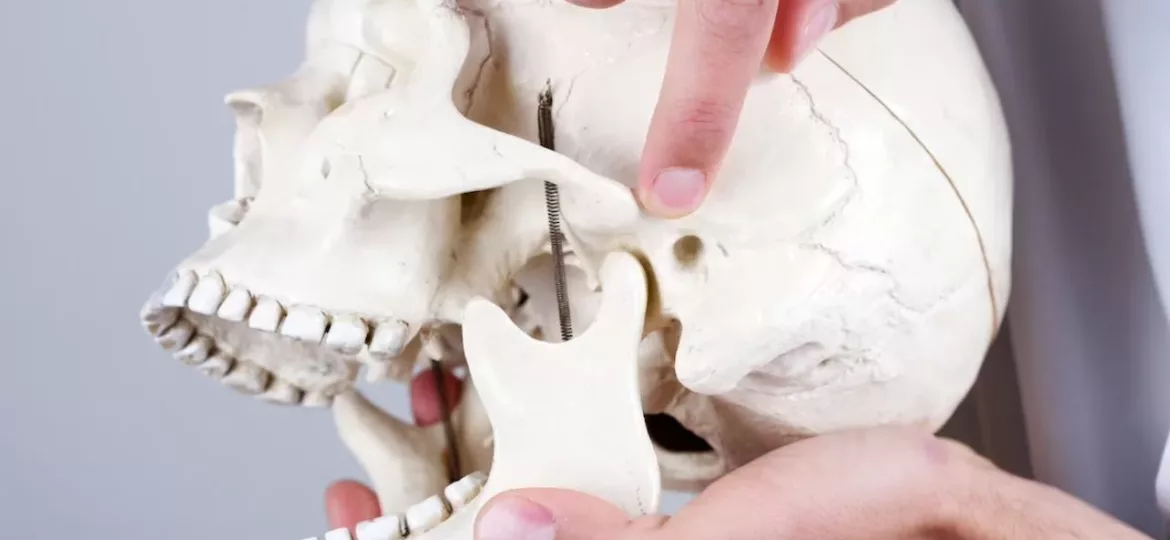
In the realm of orofacial pain, temporomandibular joint (TMJ) disorders stand out as a common yet often misunderstood condition. From mild discomfort to debilitating pain, TMJ issues can significantly impact one’s quality of life. In this comprehensive guide, we delve into the intricacies of TMJ disorders, exploring their causes, symptoms, diagnosis, and treatment options, with insights from TMJ specialist, Dr. Nojan Bakhtiari.
Understanding TMJ Disorders
The temporomandibular joint acts as a hinge connecting your jawbone to your skull. It facilitates essential movements such as chewing, speaking, and yawning. However, when this complex system of muscles, ligaments, discs, and bones malfunctions, it can lead to TMJ disorders.
Common Symptoms of TMJ Disorders
- Jaw pain or tenderness
- Clicking or popping sounds when opening or closing the mouth
- Difficulty chewing or discomfort while chewing
- Locking of the jaw joint
- Facial pain or headaches
- Earaches or ringing in the ears (tinnitus)
Causes of TMJ Disorders
Various factors can contribute to the development of TMJ disorders, including:
- Bruxism (Teeth Grinding or Clenching): Habitual grinding or clenching of teeth can exert excessive pressure on the TMJ, leading to inflammation and pain.
- Misaligned Bite: An improper bite alignment can strain the TMJ, causing discomfort and dysfunction.
- Stress: Emotional stress or anxiety can manifest physically, leading to jaw clenching or grinding, exacerbating TMJ symptoms.
- Trauma: Injury to the jaw joint or surrounding structures can trigger TMJ disorders.
- Arthritis: Degenerative joint diseases like osteoarthritis or rheumatoid arthritis can affect the TMJ, causing pain and limited mobility.
Diagnosis and Evaluation
When experiencing symptoms suggestive of TMJ disorders, seeking evaluation by a qualified healthcare professional is essential. Dr. Nojan Bakhtiari, a renowned TMJ specialist, employs a comprehensive approach to diagnose TMJ disorders. This may include:
- Clinical Examination: Evaluating jaw movement, muscle tenderness, and joint sounds.
- Imaging Studies: X-rays, CT scans, or MRI scans can provide detailed images of the TMJ and surrounding structures.
- Dental Evaluation: Assessing the bite alignment and dental occlusion.
TMJ Treatment Options
Treatment for TMJ disorders aims to alleviate pain, improve jaw function, and address underlying causes. Dr. Nojan Bakhtiari offers personalized treatment plans tailored to each patient’s unique needs. Common TMJ treatment modalities include:
- Conservative Measures:
- Lifestyle Modifications: Stress reduction techniques, dietary changes, and jaw exercises can help manage symptoms.
- Pain Management: Over-the-counter pain relievers, muscle relaxants, or anti-inflammatory medications may provide temporary relief.
- Splint Therapy: Custom-fitted oral appliances (splints or mouthguards) can stabilize the jaw and alleviate symptoms.
- Dental Interventions:
- Bite Adjustment: Orthodontic treatments or dental restorations may be recommended to correct bite misalignments.
- Occlusal Equilibration: Reshaping the biting surfaces of teeth to improve alignment and reduce stress on the TMJ.
- Advanced Therapies:
- Trigger Point Injections: Administering medication directly into tender jaw muscles can relieve pain and muscle tension.
- Botox Injections: Botulinum toxin injections can temporarily relax overactive jaw muscles, reducing pain and improving jaw function.
- Surgical Options (Reserved for Severe Cases):
- Arthrocentesis or Arthroscopy: Minimally invasive procedures to irrigate the joint space or remove inflamed tissue.
- Open Joint Surgery: In complex cases, surgical interventions may be necessary to repair or replace damaged joint structures.
Lifestyle Modifications and Self-Care Practices
In addition to professional treatment, adopting healthy habits and self-care practices can complement TMJ management efforts:
- Practice stress-reduction techniques such as meditation or yoga to alleviate jaw tension.
- Avoid chewing gum or biting hard objects that can strain the TMJ.
- Apply moist heat or cold packs to the jaw to reduce pain and inflammation.
- Maintain good posture and avoid excessive jaw movements.
Conclusion
Living with TMJ pain or clicking can be challenging, but with the right approach, relief is attainable. Dr. Nojan Bakhtiari, a trusted TMJ specialist, offers comprehensive evaluation and personalized treatment plans to address TMJ disorders effectively. By understanding the causes, symptoms, and treatment options for TMJ disorders, individuals can take proactive steps towards reclaiming their oral health and overall well-being. If you’re experiencing TMJ-related discomfort, don’t hesitate to seek expert care and embark on the path to a pain-free jaw.

